If you missed it Acid Dye Part 1 describes the basic dyeing process, and Acid Dye Part 2: Science is a fun dye science demonstration. Brief recap: Food colors are acid dyes, they only work on protein fibers like wool and silk.
What can you make with acid dyeing other than pretty yarn? You can dye something that you’ve already made out of yarn! Does that sound silly? Whatever, this is fun. 🙂
Have you ever made a yarn doll? They are simple and fluffy and fun, and greatly resemble making corn husk dolls if you’ve done that. The short explanation of this activity is, make a yarn doll, and then use the acid dyeing techniques from part 1 to permanently color it.
Remember, acid dyes only work on protein fibers, so for this to work you need to use yarn that is at least partially wool or silk.
Making a Yarn Doll
If you search the internet for ‘Yarn Doll’ or look in some old craft books you will find a million variations of this. This is how we did it:
First up, find a nice piece of cardboard. I think ours was about 4″ wide.
Wrap your white wool/silk yarn around your cardboard some number of times, I like 10 for this size doll, but 20 will make it plumper. Pull the wrapped yarn off and tie at the top and bottom for wrists. Make two more bunches of wraps and tie these only at one end, these are your feet.
Stick your arms through your other two loops.
Tie above and below the arms, holding them in place. You can also wrap the yarn around in a criss cross pattern, behind the back, cross in the front, behind the neck, wrap around to the back of the neck, cross in back, wrap around to the front and tie a bow. But you don’t need to get that fancy.
If you decide at this point you’d rather have a skirt wearing doll you can cut off the ankle ties and cut all the loops open at the bottom. (Or you could have thought ahead and not tied them!)
The only thing missing at this point is hair. You can wrap a couple loops of yarn around your hand, slip them through the head loops and tie the ends of your hair loop together at the top of the head. You can also make a long braid and tie that through the loops at the top of the head.
Even if you don’t want hair, it’s a good idea to tie a loop around the top of the head, otherwise your head spreads apart and looks rather disturbing…
If none of that makes any sense, here are some completely different tutorials for making yarn dolls:
Yarn Dolls at Wee Folk Art
Easy Yarn Dolls at AOK Corral
How to Make a Yarn Doll from WikiHow
However you make your doll it will be wonderful.
Dyeing Your Doll
For a more in-depth discussion of dyeing with acid dyes see Acid Dye Part 1.
Soak your doll in an equal mixture of water and white vinegar for 20 minutes, then squeeze it out and lay it out on a microwave safe plate. (You will need another similar plate or bowl to cover it for microwave steaming.)
Paint your doll with diluted food colors. (The acid dyes.) I use about 8 drops of food color to one ounce of water in a small squeeze bottle. Again, see Acid Dye Part 1 for more details on dyeing.
Ideally get the doll thoroughly wet but not swimming in dye. With smaller children it can help if you use a plate or container that is raised in the center, so some of the excess runs off to the edges rather than right under your doll. If you see the puddle forming you can pour it off before it gets too bad.
Once you are done dyeing cover your doll with another plate and microwave it until you hear the yarn start softly popping. This is the water turning into steam. The time is totally dependent on the size of your doll, and how wet it is, and the strength of your microwave. I think of it like making popcorn, put it on for longer than you think you need, and then stand there listening to it ready to press stop at any moment… Please don’t leave your yarn unattended and set your kitchen on fire. A minute was about right in our anemic microwave with our small dolls.
After microwaving Let the doll sit covered in the hot steam for another minute, and then rinse it out and blot it dry. If you want it darker you can soak it in the vinegar again and re-dye it.
Then love your crazy new friend.
So many wonderful variations. Efsun followed the sculptural method of continuing to tie on more yarn until she got something she was happy with. There really isn’t one way to make a yarn doll, and if you don’t like your first one, make another one! The more the merrier.
Have you ever made a yarn doll? It seems like something that everyone has perhaps done with their grandmother at some point? Or at school, perhaps in a module on pioneer crafts?

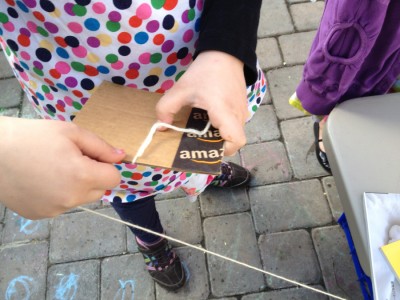
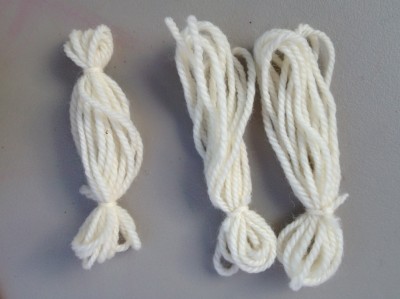
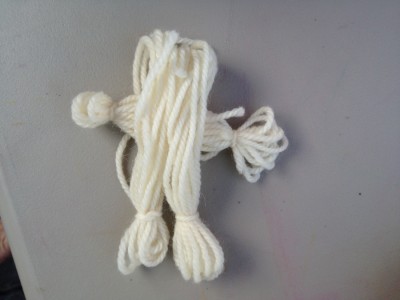
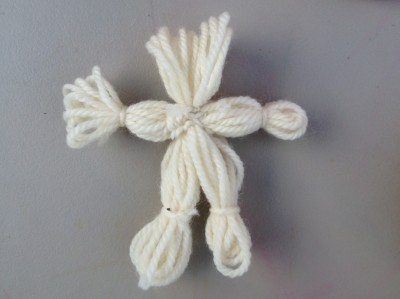

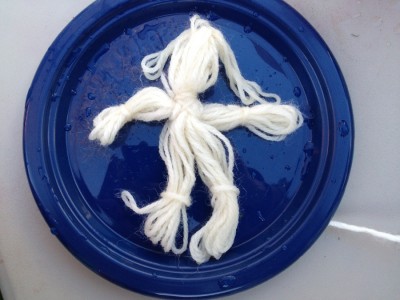
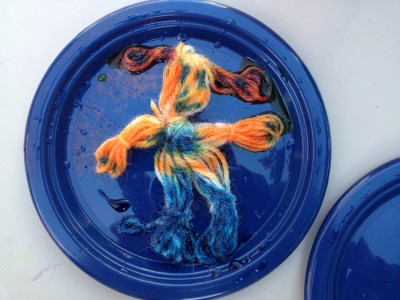
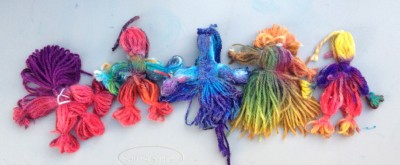
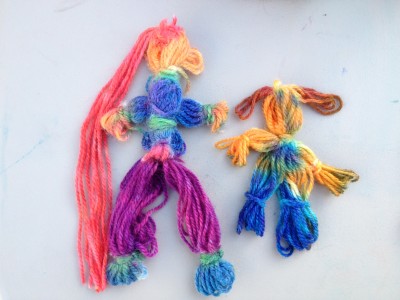


8 Comments
Add Yours →This is an awesome project!
I am curious – have you ever tried dying cotton yarn? Did it work?
If you look at part 2 you will see the very light pink that you get on cotton vs the red that you get on wool. Acid dyes just don’t meaningfully bond to cellulose fibers. You can use a cotton/wool blend or a cotton/silk blend though. Or any other protein synthetic fiber like soy silk or milk fibers, but those are harder to find. You can also use nylon, but I’m not sure I’ve ever seen nylon yarn? Maybe as a 10% in a blend.
Came back to ask, is it okay if I pin this?
Of course, you can pin whatever you feel like. 🙂 I know you know how to make everything link back properly! I was on pinterest recently, and I was so frustrated that I couldn’t find the source for some of the images because I wanted to read the tutorials!
Thanks! I often have the same problem on Pinterest, and it’s very frustrating! Pinning this 🙂
dear K- love these three posts, you are insPIring me!! I sent for some dyes and fabric samples, to see if I can do a version of my mandalas on cloth – then I saw your post about the food colorings… do you have special food coloring, or just the regular kind to get all those lovely colors? Also, when I saw this post I remembered making a yarn bear when I was 10. we used a styro ball head and it was much bigger overall, maybe 8 inches. I gave it to my baby brother Nicky:-)
I have used some yarn I was knitting and sent you and the girls some yarn bunnies, as proof that you inspire me!!! thanks….
Just regular old food colors Jennifer, but you need to use wool or silk fabric. And if you were planning on selling them, I would probably go with silk and Jacquard silk resists and dyes, because they will be more permanent than food coloring. Although they range as well, so perhaps it doesn’t matter. Here is a fascinating chart about the light- and wash-fastness of different acid dyes, both food colors and others. http://www.pburch.net/dyeing/FAQ/lightfastness.shtml
Dear.sir/Madam,
It is our pleasure to introduce ourselves as a leading Manufacturer/
Exporters of all types of MULTY COLOR SARI silk FIBER & yarn, silk yarn and
Recycled sari silk yarn We develop New yarn i take few red color
fiber ,few pink color fiber and few multy color fiber and make new
recycled sari silk yarn .
There are morethen 25 color shad Hand twist Yarn look very nice .
Our Price are Very -Very Competitive We Produce Best Quality. Order
shipping via FEDEX EXPRESS COURIER
FOR OUR MUTUAL ADVANTAGE.KINDLY VISIT OUR WEB SITE
http://www.indiamart. com/sagarexports/
http://sagarexportsint.trustpass.alibaba.com/
WITH BEST REGARDS
Yours Faithfully,
REGARDS
MUKESH
SAGAR EXPORTS INTERNATIONAL
KAZICHAK PANNAMILL ROAD
BHAGALPUR -812005
INDIA
TEL +91 641 2601847
mob +918092219838
SKYPE ID .mkmkmk5870